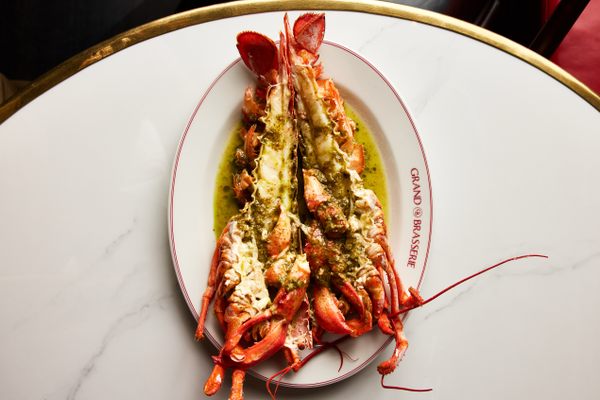The ‘Chop Suey Sundae’ Isn’t What You Think It Is
An ice cream topping once had the same name.

The first few decades of the 20th century were a golden age for ice cream in the United States. Across the country, soda fountains and drugstores served up elaborate sweet treats. In fact, many pharmacy and druggist’s magazines included detailed instructions on how to make the most cutting-edge sundaes possible to draw in customers. One perennial favorite was the chop suey sundae.
Chop suey is a classic Chinese-American meat and vegetable dish served with rice. Its most likely ancestor is a dish from Taishan, Guangdong, called tsap seui, or “miscellaneous leftovers.” Entrepreneurial Chinese chefs adapted it for American palates, and it became a standard at restaurants across the United States by the early 20th century. Before long, it became a recipe-book standard as well, typically sporting celery, bean sprouts, meat, and a thick coat of sauce.
But the dish was endlessly modified in restaurants and homes alike. As Anne Mendelson writes in Chow Chop Suey: Food and the Chinese American Journey, soon the term chop suey “had become a stand-in for any hashed mélange of ingredients,” including the chop suey sundae.

While the inventor of the chop suey sundae remains mysterious (one sundae scholar suggests a long-closed fountain in Pennsylvania as the source), recipes for the treat spread in the 20th century. On top of ice cream, “chop suey” was a topping of dried and preserved fruit, nuts, and syrup, mixed together by the pound. In a 1911 book called The Lunch Room, the basic concept is described as a topping of figs, dates, and walnuts, combined with vanilla syrup, over ice cream.
It could get much more elaborate, though. Another variation added French cherries and chocolate syrup to the figs, dates, and walnuts, which the author noted was “a very popular dish in Chicago.” Other recipes for the topping leaned on other ingredients, such as a “Chop Suey for Sundaes” that involved strawberries, pineapple, coconut, and walnuts mixed with sugar syrup.

Much like its namesake, variations abounded. Sometimes the topping was made with maple syrup, but tea syrup also made an appearance. The most elaborate versions included dried lychee “nuts,” along with nearly every other typical “chop suey” ingredient. Sometimes, said sundaes had crispy chow mein noodles on top. The implied exoticism of such a sundae was often the main draw, and proprietors didn’t hesitate to use racist stereotypes as advertising.
But Chinese-owned establishments sold chop suey sundaes as well. According to writer Judy Yung, Fong Fong, a bakery and soda fountain in San Francisco’s Chinatown that opened in 1935, served their own unique chop suey sundae, complete with sesame cookies.
The chop suey sundae, along with other ice cream treats such as “The Merry Widow Sundae,” “The Robinhood Sundae,” and “Nut Symphony,” have largely faded into the past. However, at New York’s Museum of Food and Drink (MOFAD), a special admission ticket to CHOW: Making the Chinese American Restaurant includes a new take on the chop suey sundae. Under the topping, the ice cream is General Tso’s sauce*-flavored.
*Update 9/6/18: This post has been updated to note that MOFAD’s sundae is made with General Tso’s sauce-flavored ice cream, not General Tso’s chicken-flavored ice cream.
Gastro Obscura covers the world’s most wondrous food and drink.
Sign up for our regular newsletter.


































Follow us on Twitter to get the latest on the world's hidden wonders.
Like us on Facebook to get the latest on the world's hidden wonders.
Follow us on Twitter Like us on Facebook